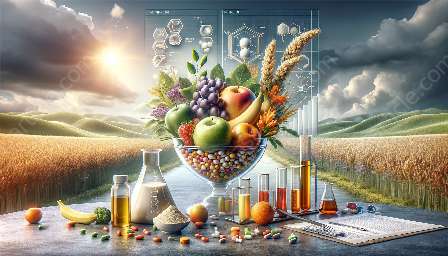Herbs have been long revered for their potential health benefits, and understanding the bioavailability of nutrients in herbs is crucial for their effectiveness as part of herbal nutrition. This topic cluster aims to delve into the complex world of bioavailability in herbs and its relevance to nutrition science, offering insights and valuable information for anyone interested in harnessing the power of herbal remedies.
The Importance of Bioavailability in Herbal Nutrition
When we consume herbs or herbal supplements, we expect to derive various nutrients and compounds from them. However, the bioavailability of these nutrients plays a critical role in determining how effectively our bodies can absorb and utilize them. Bioavailability refers to the extent and rate at which a substance, in this case, nutrients in herbs, is absorbed and becomes available to the body's physiological processes.
The bioavailability of nutrients in herbs can be influenced by various factors, including the form in which they are consumed, interactions with other substances, and individual variations in metabolism and digestive processes. Understanding these factors is essential for optimizing the nutritional benefits derived from herbs.
Key Nutrients in Herbs and Their Bioavailability
Herbs contain a wide array of nutrients, including vitamins, minerals, antioxidants, and phytochemicals, each of which may exhibit varying degrees of bioavailability. For example, the bioavailability of water-soluble vitamins such as vitamin C and B-complex vitamins in herbs may differ from that of fat-soluble vitamins like vitamin E and vitamin K.
Additionally, the presence of certain compounds in herbs, such as polyphenols and flavonoids, can also impact the bioavailability of nutrients. These compounds may enhance or inhibit the absorption of specific nutrients, further highlighting the complexity of bioavailability in herbs.
Enhancing Bioavailability of Nutrients in Herbs
As the science of nutrition evolves, researchers and practitioners are exploring various strategies to enhance the bioavailability of nutrients in herbs. This may involve innovative approaches such as nanoparticle technology to improve the absorption of specific compounds or the use of herbal formulations designed to optimize bioavailability.
Furthermore, understanding the synergistic effects of combining different herbs and nutrients can contribute to enhanced bioavailability, as certain combinations may facilitate better absorption and utilization within the body.
Challenges in Assessing Bioavailability of Herb Nutrients
Assessing the bioavailability of nutrients in herbs presents unique challenges compared to synthetic or isolated nutritional compounds. The complexity of herbal matrices, the presence of multiple active constituents, and variations in plant composition based on factors like growing conditions and harvesting methods all contribute to the complexity of evaluating bioavailability.
Moreover, the interaction of herb nutrients with the gut microbiota and other physiological processes adds another layer of complexity to understanding their bioavailability. Overcoming these challenges requires a multidisciplinary approach that integrates herbal medicine, nutrition science, and analytical techniques to gain a comprehensive understanding of bioavailability in herbs.
Implications for Nutrition Science and Herbal Medicine
The bioavailability of nutrients in herbs has far-reaching implications for both nutrition science and herbal medicine. Insights gained from studying bioavailability can inform the development of evidence-based recommendations for the use of herbs in promoting health and addressing specific nutritional needs.
Furthermore, a deeper understanding of the bioavailability of herb nutrients can contribute to the advancement of herbal formulation techniques, quality control measures, and personalized approaches to herbal nutrition. This aligns with the evolving landscape of nutrition science, where personalized nutrition and precision medicine are gaining prominence.
Conclusion
Exploring the bioavailability of nutrients in herbs unveils the intricate interplay between herbal nutrition and nutrition science. It underscores the need for comprehensive research and understanding of how the bioavailability of nutrients impacts the efficacy of herbal remedies. By delving into this topic cluster, individuals can gain a deeper appreciation for the potential of herbs as a source of nutrition and explore new frontiers in optimizing their bioavailability for improved health and well-being.

